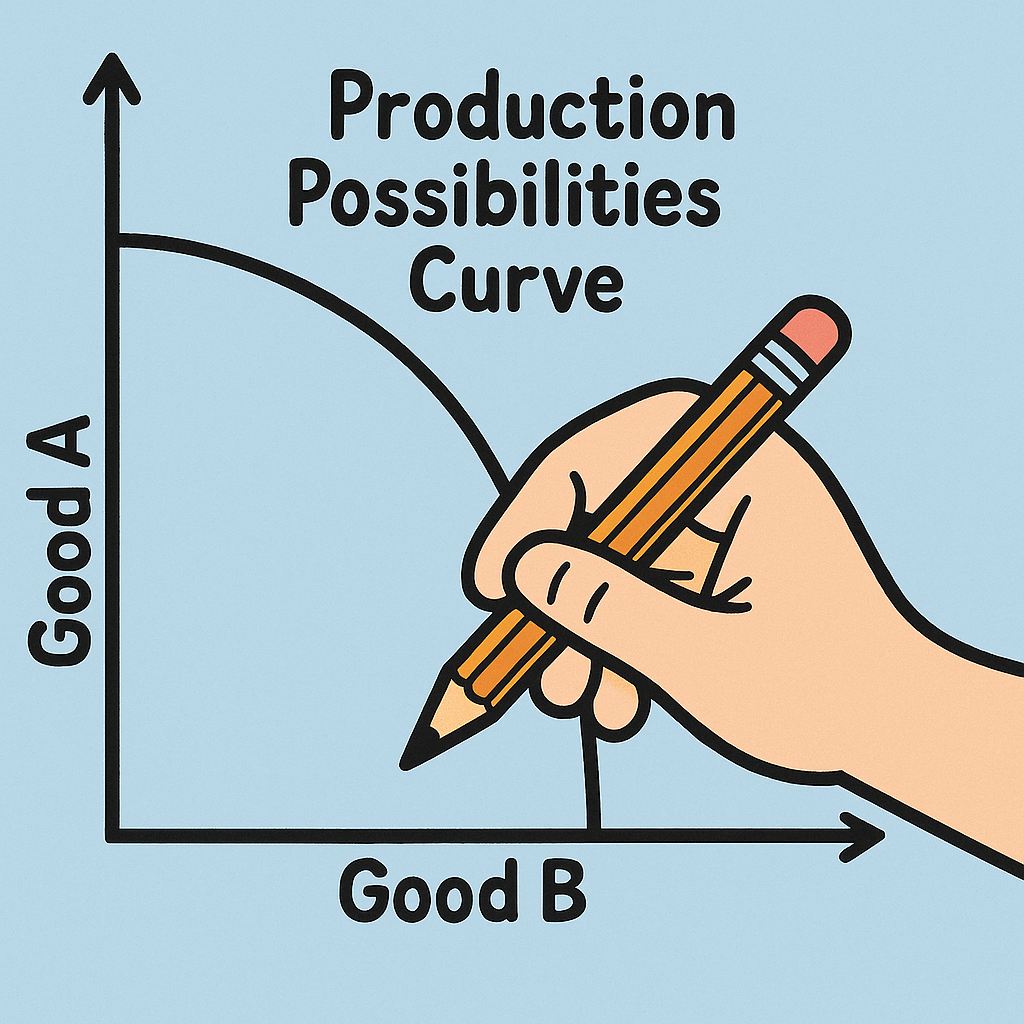
Grades 6-8

Don't have an account yet? Sign up for free
Don't have an account yet? Sign up for free
Students will be able to:

In this economics lesson, students will form a human demand and supply curve.
Miscellaneous Items
Warm-up
Start the class by stating,”Today you are going to learn about some of the most important concepts in economics and in our lives – demand and supply. The good news is that you already know a lot about demand and supply.” Show them a sandwich that you have prepared. Put it in the center of the desk, describe it in detail – really play up its features. Now, tell students that you are going to find out how much this sandwich is worth.
Modeling
Create a table with two columns. Write “Price” on the board and “Quantity Demanded” next to it. Write $15 under “price” and ask how many students are willing to pay $15 for this wonderful, homemade, delicious sandwich. Act hurt, shocked that no one (or so few) would be willing to pay $15 for this sandwich. Whatever the number, write that number under “quantity”. Under $15, write $10 and ask again how many are willing to pay $10 for this amazing sandwich. Write this number next to $10 and under the previous quantity. Repeat with other prices, decreasing from $10, ending with a ridiculously low price, like $1, when most, if not all, students should indicate they’d be willing to pay that much for the sandwich.
Point out to students that this table shows something that they already know: that when the price of something falls, people want more of it, or, as in the case of our sandwich, that if the price of something falls, more people will want it. Quantity demanded changes both when more people want an item and when more of an item is wanted by one person. Tell students that this is called the law of demand where consumers will purchase less of a good or service at higher prices and more at lower prices. Add a third column, headed, “Quantity Supplied”. Tell students that now they are no longer consumers who are interested in eating the sandwich, they are suppliers. Suppliers are the people who make and sell the sandwich. Starting at the bottom of the table with the lowest price you have listed, ask how many of them are willing to sell their sandwich for that price? Keep going up the table, asking at each price, record the quantity under “quantity supplied”. By $15, most, if not all students, should be willing to sell a sandwich for that amount. Point out to students that the relationship between price and quantity supplied is just the opposite as that for price and quantity demanded: that as the price increases, so does quantity. This is a positive or direct relationship. Tell students that they have just described a market. A market is where people who want something and people who sell something come together to try to exchange a good or service. In this case, we are in the markets of sandwiches. Point out that at a price of $1 (or whatever your lowest price is) no one (or few) were willing to participate in this market. Ask why? If students get stuck, go to the extreme and ask if they’d be willing to just give the sandwiches away. This should get them thinking about making a profit and covering their costs of making the sandwich. Tell students that you will come back to the sandwich example later, but that next, some of them are going to become human demand and supply curves.
Group Activity
Prepare the classroom in advance by hanging 5 sheets of paper along one wall, evenly spaced apart, each with a price: $2, $4, $6, $8 and $10. Also, have prepared 5 sets of pieces of paper or note cards in two different colors. The cards should be prepared as follows:
When you are ready to do this demonstration, clear a path in your classroom in front of the prices you have taped up to the wall.
Ask for 10 volunteers and have students draw one of the prepared cards. Tell students that those who hold cards of Color 1 are consumers (demanders) and those who have Color 2 cards are suppliers. Tell students that they will be demonstrating the demand and supply curves for an ice cream sundae. Not just any ice cream sundae but a triple-scoop ice cream sundae with gourmet sprinkles and three kinds of sauce, a very special ice cream sundae. Ask which students have $2 on their cards. Tell the student with $2, 10 on their card to stand against the wall under the $2 sign and do a heel-to-toe walk of 10 steps straight out (perpendicular) to the wall. Tell the other student with $2, 2 to do a similar walk (i.e 2 steps).
Ask which students have the $4 cards and again, starting with the one with the higher quantity number, have them take the number of heel-to-toe steps that are indicated on their cards under the wall sign for $4. Repeat for the remaining cards. Tell the class to notice that those with the first color represent the same kind of relationship as was illustrated in the sandwich demonstration. When price is low, more is demanded and when price increases, quantity demanded falls. These are consumers. Call attention to the students who hold the second color cards and that their reaction to price is the opposite. These are the suppliers. Tell students to notice that everyone is standing apart from each other with two exceptions. Ask the volunteers, who feels crowded? The holders of the cards that have $6/6 should say that they both are trying to occupy the same space. Tell students that at a price of $6, the amount that consumers want to buy is the same as the amount that suppliers want to supply. Tell students this is called equilibrium.
Choose a pair of students, for example, the $2 card holders. Ask the consumer, why do you want to buy so much? Ask the supplier, why don’t you want to make more? Play this up. Look how far apart you are! You’re 8 steps (units) apart! Ask the same question of the card holders of $10 cards. Give the two $4 card holders a yardstick to hold between them, parallel to the floor and perpendicular to the price wall. Note: the purpose of students holding the yardstick is to create “live” the horizontal line that is drawn on graphs of demand and supply to indicate price ceilings and floors. Tell students that you, as the government, have decided that the price of $6 is too high and that you have decreed that price cannot be more than $4. Ask the $4 consumer how much he/she wants to buy at that price (i.e., the number of the card–the number of steps he/she took). Look at the $4 supplier and ask if they’re willing to provide that many to the market <no>. Ask the rest of the class if there’s a problem <there’s more demanded than supplied>. Identify this as a price ceiling, creating a shortage. Ask students how much the shortage is? It is 4. Tell students that if price cannot rise to $6, then 6 units are not provided to the market. Ask how many units are provided <4>, from the supplier. Tell students that participating in the market is always voluntary. We can’t force suppliers to provide units to the market if he/she doesn’t want to/doesn’t find it profitable to do so.
Give the yardstick to the two students who have the $8 cards and repeat the same process, this time identifying that you have established a price floor – you are not letting price fall below $8, which creates a surplus, when units supplied is greater than units demanded. That is, ask the supplier how many he/she is willing to provide to the market for $8 (8 units). Ask the consumer how much he/she wants to buy at $8 (4 units). Ask the class what the problem is now? The problem is that there is too much supply, or a surplus.
Individual Activity
Give students a copy of The Icecream Stand. Direct their attention back to the original demand and supply table you created when you started the lesson, which is the price and quantity data connected to the sandwich. Tell students to graph the demand and supply information on their grids. Have them estimate what the equilibrium price and quantity is. Pick a price that is below whatever the equilibrium is and tell students that you are creating a price ceiling at this price. Have them indicate the size of the shortage. Do the same for a price floor. Review the answers as a class.
Assign students the article by NPR, Why Economists Love Price Gouging and Why It’s So Rare. Distribute another copy of The IceCream Stand to each student. Using the grid on the handout, have students choose a good that would be affected by a natural disaster. Tell them to draw and demand and supply curve that represents the good before a disaster and then show what would happen after a disaster. The usual case is that supply decreases (curve shifts to the left), price increases and quantity decreases. Have students address the question of fairness raised in the article and recommend whether limits should be placed on price increases, that is, a price ceiling. Have students show on their graphs what the result would be of legislation banning price gouging (shortages). Have students make a recommendation: allowing prices to rise in the aftermath of a disaster or putting a price ceiling in place.
Activity 1
Tell the students who are consumers that you are going to give each one of them $50. Ask one of the consumers if he/she would want more or less at their price. Ask another consumer student the same question. Tell the class that when consumers have more income, they buy more of some goods (“normal” goods). Tell all the consumers to take another 2 steps away from the wall. Ask the class what happens to the equilibrium price. What happens to equilibrium quantity? It also increases. Tell consumers to go back to their original spots. Ask what would happen if they had more income, but instead of a triple-scoop ice cream sundae with gourmet sprinkles, the good were a carton of store-brand ice cream sandwiches. Ask one of the consumers if he/she would want more or less of them. If students are confused, emphasize that these are made out of fake chocolate, watery ice cream, etc. They should want less of them. Tell the consumers to take 3 steps toward the wall. Note: some students won’t be able to, they will have run out of floor space. Ask what happens to equilibrium price and quantity in this case. They both will decrease. Tell students that the store brand ice cream sandwiches are an example of an inferior good. Something you want less of the more money you have. If you would like, repeat this exercise for some of the other determinants of demand (price of related goods, tastes and preferences, etc.).
Activity 2
Tell all the suppliers that they now have a new technology that allows them to make the triple-scoop ice cream sundaes with the gourmet sprinkles twice as fast as they could before. Ask if they would be willing to provide more or less to the market at each price. Ask the student holding the $8 card, for example, if he/she would be willing to provide more or less. Tell the producers to take 3 steps away from the wall and ask about the equilibrium price and quantity. Price is lower, quantity is greater. Tell the producers to return to their original spots. Ask what they would do if suddenly gourmet sprinkles were very hard to find and their price increased. They would produce fewer. Ask what would happen to equilibrium price and quantity in this case. Price increases, quantity decreases.

Grades 6-8

Grades 9-12

Grades 9-12

Grades K-2, 3-5
